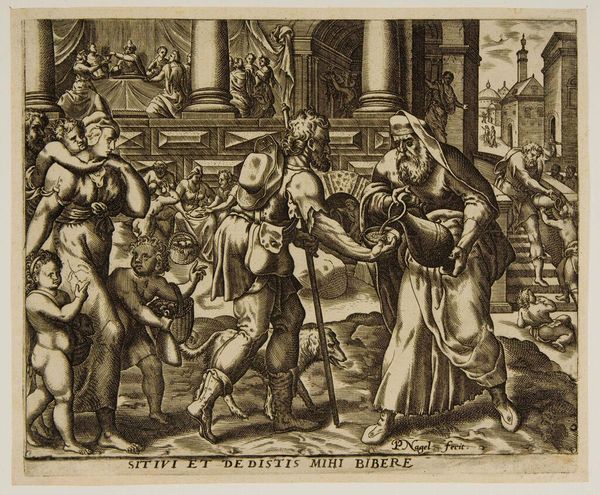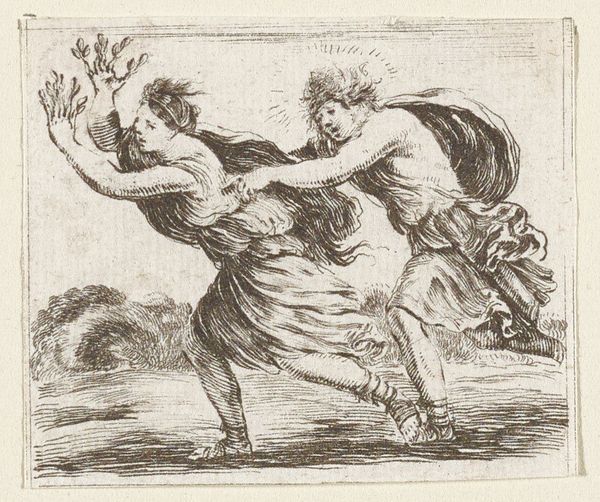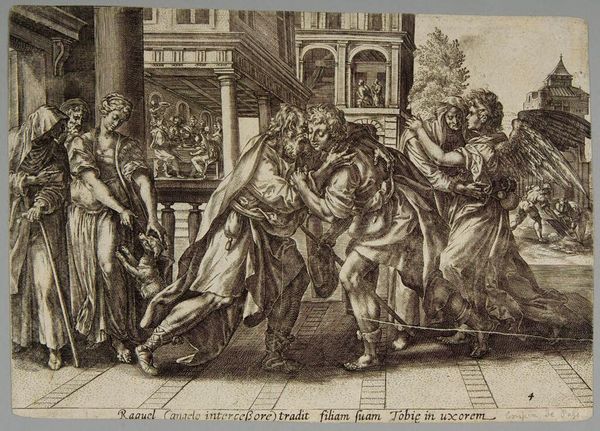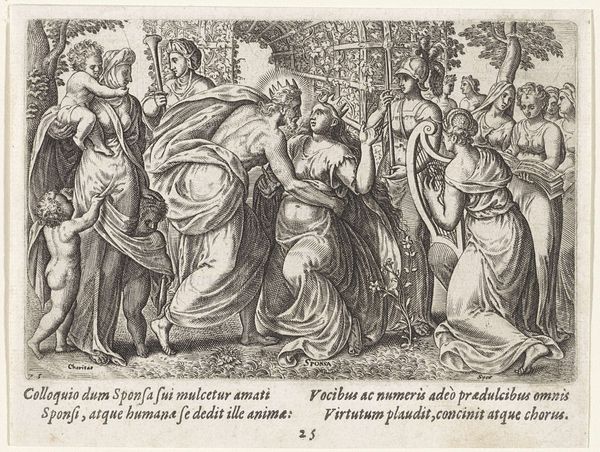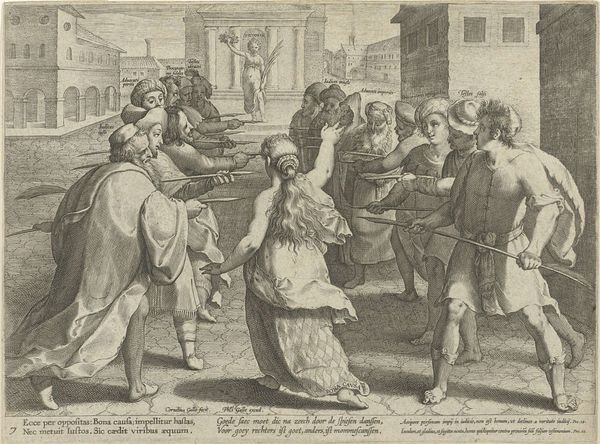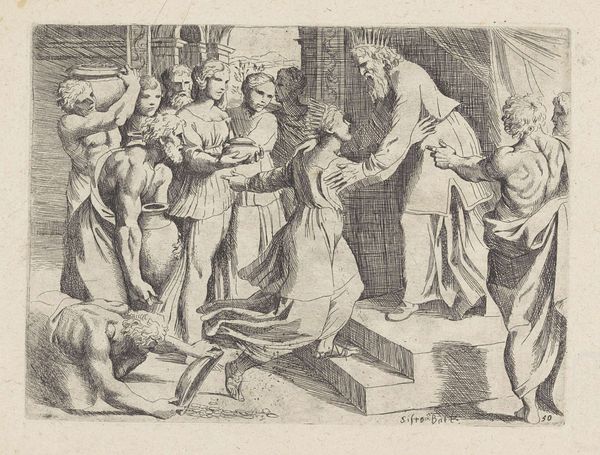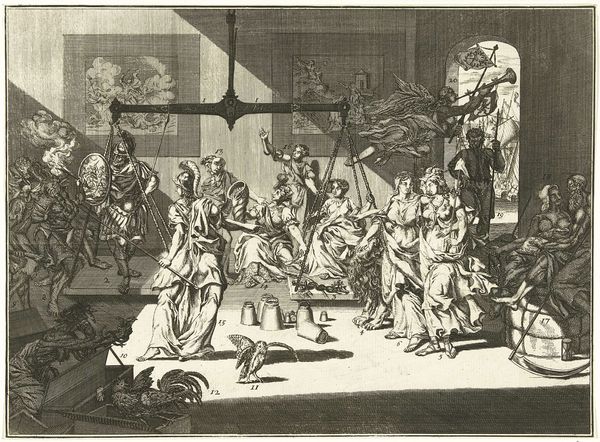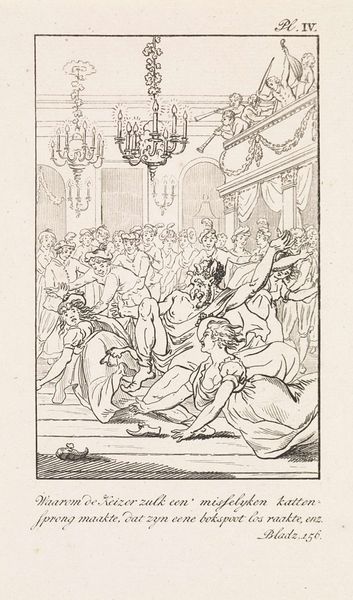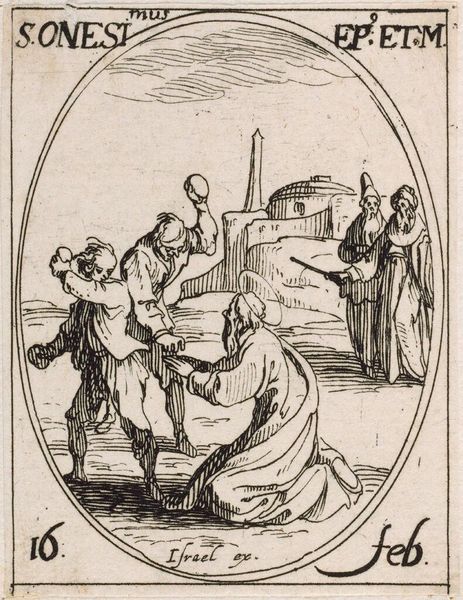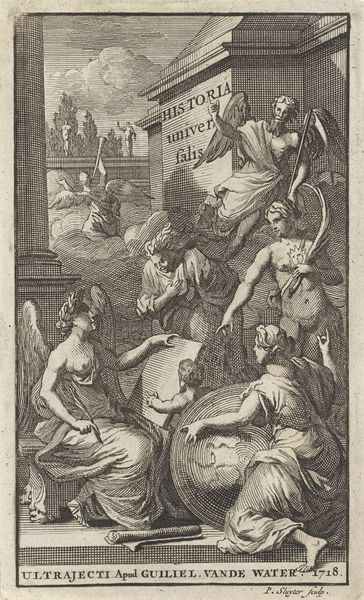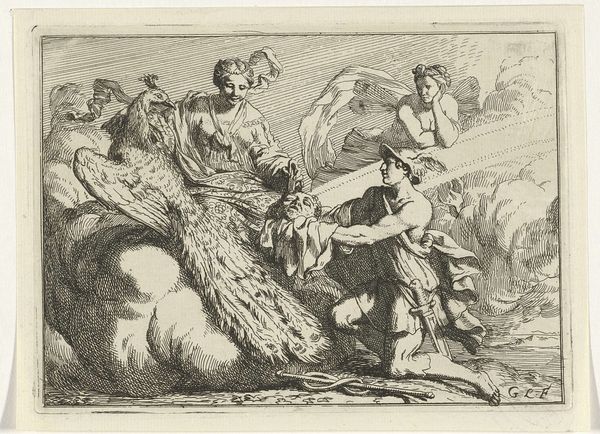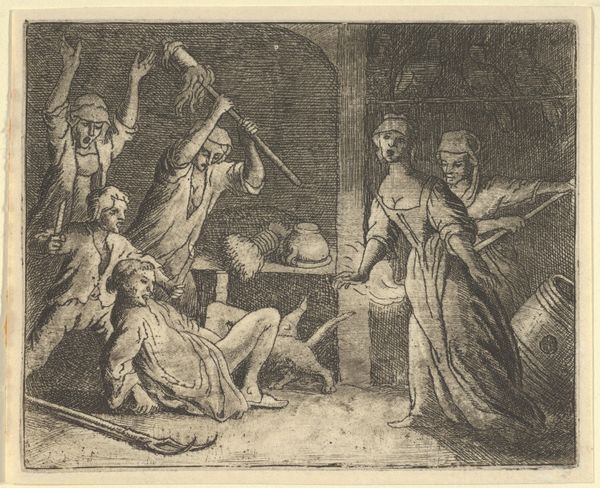
Dimensions: image: 35 x 75 mm
Copyright: CC-BY-NC-ND 4.0 DEED, Photo: Tate
Curator: This is William Blake's etching, ‘For him Our Yearly Wakes and Feasts We Hold,’ currently residing in the Tate Collections. Editor: It has a ghostly, dreamlike quality—the figures seem to float between revelry and lament. The monochrome palette intensifies the emotional ambiguity. Curator: Blake created this vignette to illustrate his poem “Song of Los.” The neo-classical building in the background hints at the societal structures he critiqued. Editor: Those dancing figures, are they celebrating or mourning? The title suggests communal ritual, but their expressions are inscrutable. Is this a commentary on enforced festivity, perhaps? Curator: Exactly. Blake was deeply critical of institutions. This work can be interpreted as an exploration of the ways celebrations can mask darker realities, or even serve oppressive functions. Editor: So, beneath the surface of festivity, there may exist undercurrents of social critique. It’s a reminder to question whose voices are amplified and whose are suppressed, even in moments of collective joy.
Comments
tate 6 months ago
⋮
http://www.tate.org.uk/art/artworks/blake-for-him-our-yearly-wakes-and-feasts-we-hold-a00123
Join the conversation
Join millions of artists and users on Artera today and experience the ultimate creative platform.
tate 6 months ago
⋮
Samuel Palmer was the most important of Blake’s followers, known as the Ancients. Palmer first met Blake in 1824. He described these illustrations to an imitation of the First Eclogue by the Roman poet Virgil as ‘visions of little dells, and nooks, and corners of Paradise’. Palmer’s art was particularly influenced by them. These prints appealed to the Ancients because they were the result of Blake’s experiments with a new medium; he had never engraved on wood before. Even at the age of sixty-four he wanted to make further explorations in his art. Gallery label, August 2004
